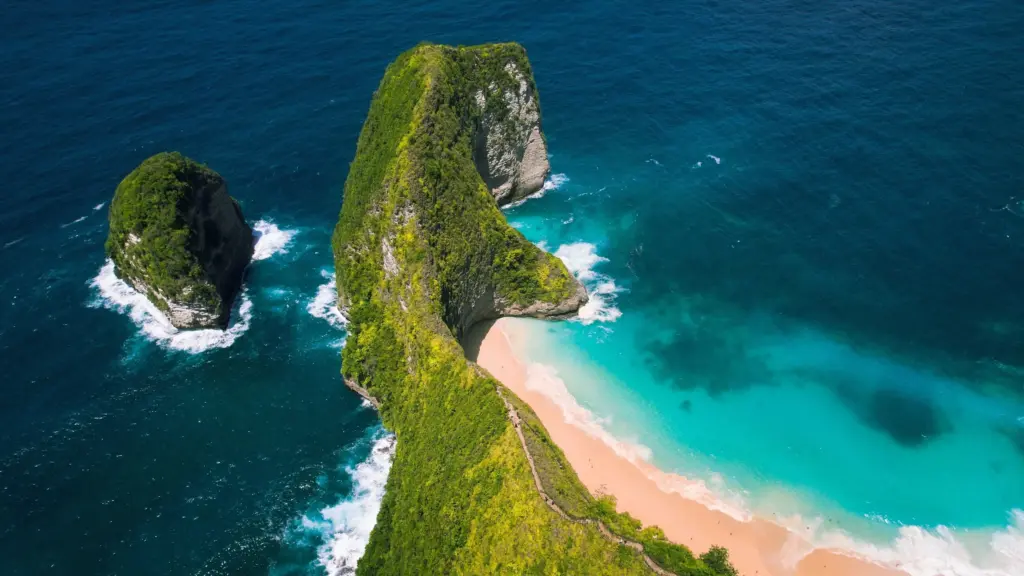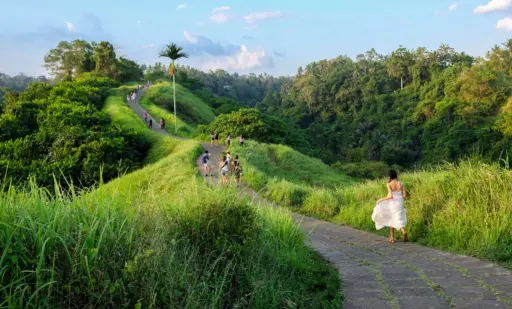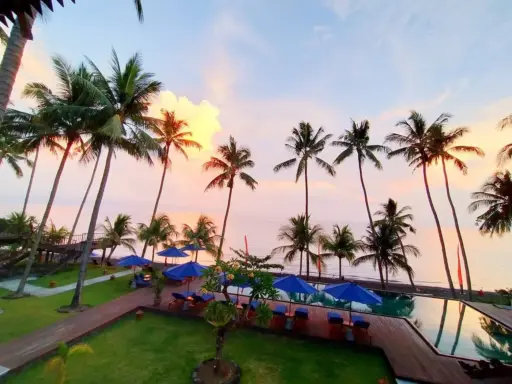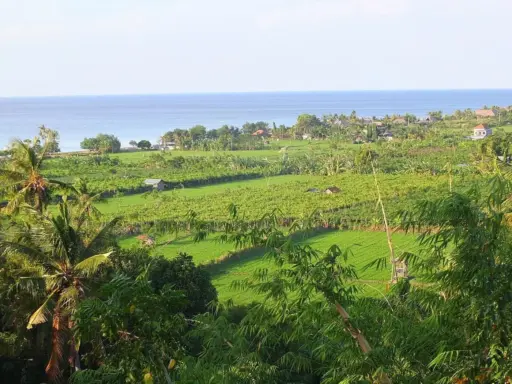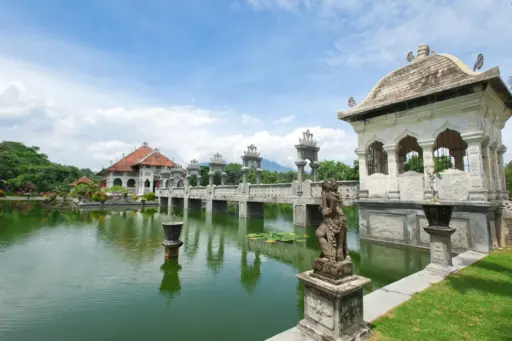Stunning cliffside beach on Nusa Penida, famous for its T-Rex-shaped viewpoint and adventurous hike.
Tucked into the southwestern edge of Nusa Penida, Kelingking Beach is one of Bali’s most unforgettable sights. From the clifftop viewpoint, a narrow ridge covered in lush greenery juts dramatically into the ocean, forming the shape of a T-Rex head. It is a scene that feels almost surreal at first glance – like something crafted for a fantasy film. But this is no CGI backdrop. It is real, raw nature, and it has earned its place as one of Indonesia’s most photographed landmarks.
Yet Kelingking is more than just a photo stop. It is a full sensory experience – one part awe, one part challenge, and one part escape. While the view from above is spectacular, those who choose to descend the cliffside trail are rewarded with one of the most stunning (and secluded) beaches in the country.
Reaching Kelingking Beach requires a bit of effort, but it is worth every minute. First, you need to get to Nusa Penida, a rugged island just off Bali’s southeastern coast. Fast boats run daily from Sanur, taking around 35 to 45 minutes across the Badung Strait. Tickets can be booked online or bought at the harbour, with several operators offering early morning departures. Once you arrive at the island’s port – typically Banjar Nyuh or Toya Pakeh – you will need to make the roughly one-hour journey by scooter or car to Kelingking. The roads are narrow, winding, and often potholed, so if you are not confident on two wheels, hiring a local driver is a smart call. The beach is included on many west coast tour itineraries, often paired with stops at Broken Beach, Angel’s Billabong, and Crystal Bay.
The Famous T-Rex Clifftop and the Challenging Hike
What makes Kelingking famous is not just its beauty, but the combination of scale and shape. The viewpoint at the top gives you a bird’s-eye view of the towering cliff and the vivid blue sea crashing below. The curved headland looks unmistakably like a dinosaur’s head and spine, and this visual – especially from a drone – is what launched Kelingking into travel stardom. But it is also a place where nature feels powerful and untouched. The beach itself lies far below the cliff and feels almost hidden from the world.
For most visitors, taking in the view from the top is enough. It is stunning in any light, though early morning and late afternoon are best if you want to avoid crowds or harsh sun. There are bamboo fences along the cliff edge, but safety is still your responsibility – this is not a manicured tourist attraction. Step carefully, especially if the ground is slippery.
Those with more time (and energy) often attempt the hike down to the beach. Be warned – this is no casual stroll. The path is steep, rough, and often crowded. Parts of it are carved directly into the rock, with basic bamboo rails to help steady yourself. Going down takes about 30 minutes, coming up can take double that, especially in the midday heat. You will need proper footwear, plenty of water, and a decent level of fitness. This is not a good hike for children or anyone with mobility issues.
If you make it to the bottom, you will find a beach that feels worlds away from the busy clifftop above. The sand is soft and white, the cliffs tower behind you, and the waves roll in with incredible force. It is a magical spot, but not one for casual swimming – the currents are strong, and the shore break can be violent. Many people simply cool off at the edge or relax on the sand, soaking in the feeling of being at one of Bali’s most isolated beaches.
There are no lifeguards, no umbrellas, and no beach bars. That is part of the charm, but it also means you need to be prepared. Everything you need – water, sunscreen, a hat – you should bring down with you. And bring it back up again. Trash is a real issue on the island, and visitors are encouraged to leave no trace.
Tips for Visiting Kelingking Beach
Back at the top, there are basic facilities including small warungs selling cold drinks, instant noodles, coconuts and snacks. A few of these spots have great views, making them a good place to catch your breath. You will also find souvenir stalls, simple toilets, and a parking area near the entrance. Expect to pay a small fee (around IDR 5,000 to 10,000) for parking.
Because of its location, Kelingking is often visited as part of a day trip from Bali, but staying overnight on Nusa Penida is well worth it. It gives you a chance to see the sights without the mid-morning crowds and lets you experience the quieter, more local side of the island. There are plenty of small guesthouses, homestays, and a growing number of boutique hotels near the northern coast, where most of the boats dock.
If you are planning your visit, the dry season (April to October) offers the most reliable weather and the safest hiking conditions. During the rainy season, the trail can become slippery and dangerous. No matter when you go, aim to visit early in the morning or later in the day to avoid the peak heat and crowds. And most importantly, take your time. The views here deserve more than a quick snap.
Kelingking Beach is one of those rare places that lives up to the hype. It is dramatic, beautiful, slightly intimidating, and absolutely unforgettable. Whether you come for the photo, the hike, or the sense of awe, this cliffside wonder will likely be one of the most memorable stops on your Bali trip. It is a place where nature speaks loudly – and all you need to do is listen.
